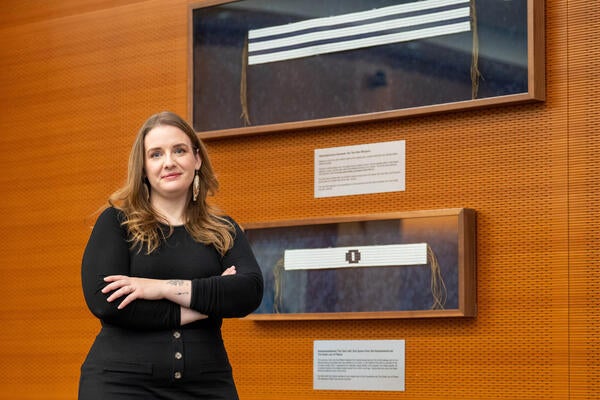
New tree of life may hold clues to cleaning up pollution
A Waterloo researcher who helped create the revised tree of life hopes new microorganisms will help clean up contamination

A Waterloo researcher who helped create the revised tree of life hopes new microorganisms will help clean up contamination
By Victoria Van Cappellen Faculty of ScienceA new University of Waterloo professor who was part of a research team that has discovered 1,000 new microorganisms, is hoping the team’s revised “tree of life” will hold clues to cleaning up environmental contamination.
The tree of life is one of the most important organizing principles in biology. It’s been used to trace how life has evolved and diversified since Charles Darwin first sketched it back in 1837.
Biology professor Laura Hug, who joined Waterloo's Faculty of Science in January, was a postdoctoral fellow with Jill Banfield, a professor of Earth and Planetary Science at the University of California Berkeley, when the new tree of life was developed. Their research was recently published in the journal Nature Microbiology.

A diagram representing Hug's "tree of life"
Now, Hug plans to further her research on the diversity and function of new microorganisms to clean up pollution. One of her projects includes investigating microbial communities found at landfill sites, which are currently understudied.
“Contaminated sites are extreme environments with microbial communities that have adapted to these harsh conditions, and whose members are often able to degrade the contaminants,” says Hug. “This new tree highlights how much microbial diversity is still uncharacterized, including organisms with activities we can use for remediation.”
As part of her research at the University of Waterloo, Hug will focus not just on characterising new organisms in the environment, but understanding the function of this new genetic material.
“The ability to annotate functions is one of the big challenges in biology right now,” says Hug. “Even in the simplest unit of life, we don’t know what a third of the genes do, but they’re absolutely necessary,” says Hug, who is looking for graduate students to join her research group.
The research Hug did with the Berkeley team involved using a smaller sized filter to target tiny, previously overlooked bacteria. Hug helped to apply advanced metagenomic analysis and customized genome binning to reconstruct whole genomes from nearly 800 species. Hug and Banfield teamed up with researchers from Texas, California and Japan to rework the tree of life by including all newly discovered genetic diversity.
Their tree of life contains more than 3,000 organisms, one from each genus for which fully or almost fully sequenced genomes were available. Samples hail from every corner of the globe, including a dolphin’s mouth. Nearly a third of these organisms are new and are known only from their genomes. The genome revolution allows researchers like Hug to search directly for a microbe’s genomes in the environment, rather than trying to culture them in a lab dish.
“The [new] tree gives us a benchmark for life as we currently know it, and invites hypotheses into what we are still missing,” says Hug.
One of the largest branches to appear in the new tree is “candidate phyla radiation.” It includes nearly half of all bacterial evolutionary diversity, and researchers suspect these organisms are mostly symbionts, which means they rely on other life forms to survive.
The resulting tree, representing the total diversity among all sequenced genomes, shows that about one-third of all biodiversity comes from bacteria, one-third from uncultivable bacteria, and a bit less than one-third from Archaea and eukaryotes.

Read more
Waterloo researchers have developed a new quantum computing approach that brings science closer to simulating the early universe

Read more
New research from the University of Waterloo centres Haudenosaunee-led efforts in the repatriation and reclamation of cultural and intellectual property

Read more
Astronomers spot massive gas streams flowing from ultra-hot Jupiter that rewrite expectations for these massive giants of space
The University of Waterloo acknowledges that much of our work takes place on the traditional territory of the Neutral, Anishinaabeg, and Haudenosaunee peoples. Our main campus is situated on the Haldimand Tract, the land granted to the Six Nations that includes six miles on each side of the Grand River. Our active work toward reconciliation takes place across our campuses through research, learning, teaching, and community building, and is co-ordinated within the Office of Indigenous Relations.